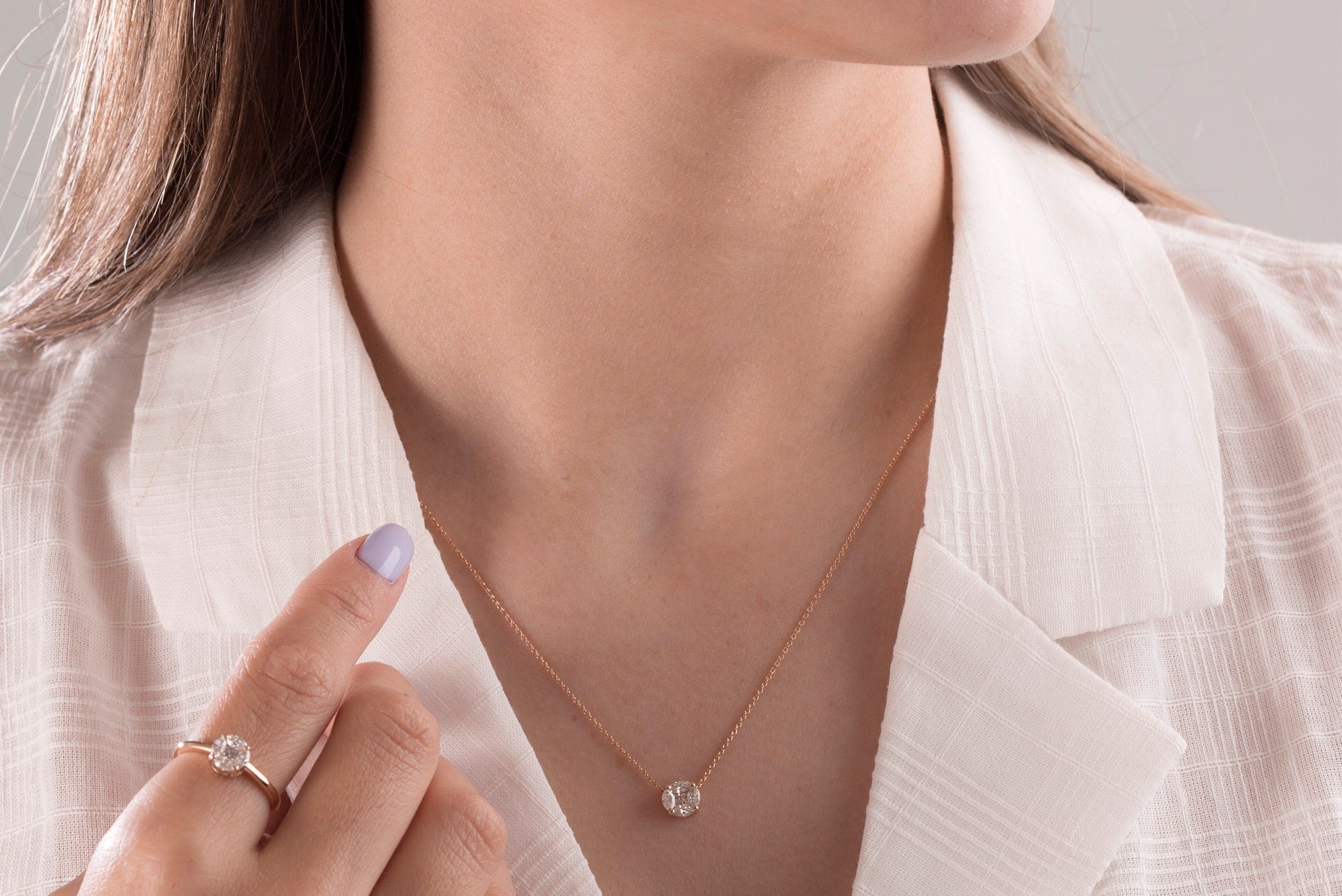When it comes to selecting the perfect lab diamond ring, one of the most important factors to consider is the size. Finding the right size ensures comfort, durability, and an overall flawless look. In this article, we will delve into the essential steps to help you choose the ideal ring size. We will also provide a comprehensive lab diamond ring size guide, so you can make an informed decision when purchasing a stunning lab diamond ring.
Understanding Lab Diamond Rings
Lab diamonds, also known as man-made diamonds, are crafted in a controlled environment using advanced technology that replicates the natural diamond creation process. They are chemically, physically, and optically identical to mined diamonds, offering an eco-friendly and cost-effective alternative. One of the advantages of choosing a lab diamond is that it allows you to select from a range of shapes, carat weights, and settings to create a ring that fits your style. To ensure the perfect fit, it is essential to understand how to choose the right size, which will be covered in our lab diamond ring size guide.
Why Ring Size Matters
The ring size is crucial for comfort and aesthetics. A ring that is too tight may be uncomfortable to wear, while a ring that is too loose can slip off your finger. Additionally, the size of the ring can influence how the lab diamond is perceived. A ring that fits well will not only look elegant but will also allow the diamond to shine without distraction. This is where the lab diamond ring size guide comes in handy. Knowing your exact ring size ensures you choose a design that complements your hand while showcasing the brilliance of your lab diamond.
How to Measure Your Ring Size
Before you even begin browsing for your ideal lab diamond ring, it’s essential to determine your ring size accurately. There are a few simple methods to do this at home:
- Use a Ring Sizer: The easiest way to measure your ring size is by using a ring sizer, which you can purchase or request from jewelry stores. Simply slide the sizer onto your finger to see which size fits snugly.
- String or Paper Method: If you don’t have a ring sizer, use a piece of string or paper to measure your finger. Wrap it around your finger, mark where it overlaps, and then measure the length with a ruler. Use this measurement to refer to a ring size chart.
- Visit a Jeweler: A professional jeweler can measure your finger using a set of metal rings. This method provides the most accurate result, and many jewelers offer this service for free.
Understanding your exact ring size is the foundation of any lab diamond ring size guide. Once you know this, you can proceed confidently to select the perfect ring.
Consider the Width of the Band
When selecting a lab diamond ring, it is essential to consider the width of the band. A thicker band will require a slightly larger size to ensure a comfortable fit. On the other hand, a narrow band will usually feel tighter and may require a smaller size. If you are purchasing a lab diamond ring with a wide band, be sure to keep this in mind when determining your size. If you’re unsure, it’s a good idea to consult with a jeweler who can offer guidance based on the specific design and style of the ring.
Different Shapes and Settings Impact Ring Size
Lab diamond rings come in various shapes, including round, princess, oval, and emerald, each with its own unique style and look. The shape and setting of the diamond also play a role in how the ring fits and feels on your finger. A solitaire setting, for example, typically requires a different fit than a halo or three-stone setting due to the extra prongs and metal surrounding the diamond.
While the size of the lab diamond itself does not affect the fit, the overall design of the ring does. A larger diamond or a more elaborate setting can create the illusion of a bigger ring, making it essential to double-check your ring size against the specific design you’ve chosen. A good lab diamond ring size guide will account for all these factors to ensure a perfect match.
What to Do if the Ring Doesn’t Fit
If you’ve purchased a lab diamond ring and it doesn’t fit, don’t worry! Most jewelers offer resizing services to adjust the ring to your exact size. However, it’s essential to check the ring’s design before resizing. For example, rings with intricate settings or bands that feature stones all around may be more challenging to resize than simpler designs.
Additionally, resizing may take some time, so be prepared for a few extra days or weeks before the ring is ready. It is always advisable to check the store’s policy regarding resizing before making a purchase.
Conclusion
Choosing the perfect lab diamond ring starts with selecting the correct size. Using the information in this lab diamond ring size guide will help you ensure that your ring fits comfortably while showcasing the beauty of your lab diamond. Whether you’re looking for a classic solitaire or an elaborate halo setting, understanding how to measure your ring size accurately and considering factors such as band width and design will lead you to a successful purchase. Don’t rush the process—take your time to choose wisely, and enjoy the brilliance and elegance of your perfect-fitting lab diamond ring.

 Why Civil Construction Companies Are the Best Choice for Developing School Facilities
Why Civil Construction Companies Are the Best Choice for Developing School Facilities  Immigration Lawyer in San Antonio: Expert Legal Assistance for Your Immigration Needs
Immigration Lawyer in San Antonio: Expert Legal Assistance for Your Immigration Needs  Diamond Initials: A Personal Touch to Luxury with Lab Created Diamonds
Diamond Initials: A Personal Touch to Luxury with Lab Created Diamonds  The Timeless Elegance of the Oval Diamond Ring with Man Made Diamonds
The Timeless Elegance of the Oval Diamond Ring with Man Made Diamonds  The Timeless Allure of Pear Diamond Engagement Rings
The Timeless Allure of Pear Diamond Engagement Rings  Sparkle with Purpose: The Beauty and Value of Lab Grown Diamond Earrings
Sparkle with Purpose: The Beauty and Value of Lab Grown Diamond Earrings  The Importance of Sod Installation and Choosing the Right Soil for Your Landscape
The Importance of Sod Installation and Choosing the Right Soil for Your Landscape  Diamond Cuts: A Guide to Choosing the Perfect Cut for Your Jewelry
Diamond Cuts: A Guide to Choosing the Perfect Cut for Your Jewelry 




